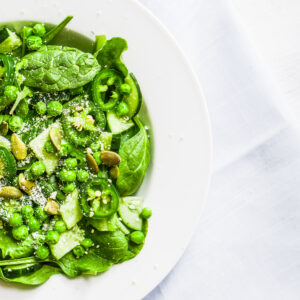So you’ve been diligently working out, eating healthy, and shedding those extra pounds, but there’s still that stubborn last 10 pounds of belly fat that just won’t budge. Frustrating, isn’t it? Well, fret not! In this article, we’ll explore some effective strategies to help you finally say goodbye to that stubborn belly fat and welcome a slimmer, more toned midsection. No need to worry about crash diets or extreme workouts – we’ll focus on sustainable and practical tips that will have you feeling confident and beach-ready in no time. Are you ready to discover the secret to shedding that last 10 pounds of belly fat? Let’s get started!
Create a Caloric Deficit
Calculate your daily calorie needs
To successfully lose the last 10 pounds of belly fat, it is important to create a caloric deficit. This means consuming fewer calories than your body needs to maintain its current weight. The first step in creating a caloric deficit is to calculate your daily calorie needs. Several online calculators can help you estimate the number of calories your body requires based on your age, gender, height, weight, and activity level. This will give you a baseline number to work with and adjust accordingly.
Reduce calorie intake
Once you have determined your daily calorie needs, it’s time to reduce your calorie intake. To lose weight effectively and sustainably, it is generally recommended to aim for a moderate calorie deficit of around 500 to 1000 calories per day. This can be achieved through a combination of eating fewer calories and increasing calorie expenditure through physical activity.
To reduce your calorie intake, focus on making healthier food choices and practicing portion control. Be mindful of the types of foods you consume and opt for nutrient-dense, whole foods such as fruits, vegetables, lean proteins, and whole grains. These foods are lower in calories and higher in nutrients, helping to keep you satisfied while still maintaining a caloric deficit.
Increase calorie expenditure
In addition to reducing calorie intake, increasing calorie expenditure through physical activity is crucial for losing the last 10 pounds of belly fat. Engaging in regular exercise not only burns calories but also helps to build muscle mass, which can increase your metabolism and further contribute to weight loss.
Follow a Balanced Diet
Focus on whole foods
When aiming to lose belly fat, it is essential to follow a balanced diet that focuses on whole foods. Whole foods are unprocessed or minimally processed and provide your body with a wide range of nutrients. These include fruits, vegetables, lean proteins, whole grains, nuts, and seeds. By incorporating these foods into your daily meals, you can improve your overall nutrition and support your weight loss efforts.
Include lean proteins
Including lean proteins in your diet is particularly important when trying to lose belly fat. Protein helps to increase satiety, reduce appetite, and preserve lean muscle mass. Some excellent sources of lean protein include skinless chicken breast, turkey, lean cuts of beef or pork, fish, tofu, legumes, and low-fat dairy products. Aim to incorporate protein into every meal to support your weight loss goals.
Incorporate healthy fats
Contrary to popular belief, not all fats are bad for you. In fact, incorporating healthy fats into your diet can be beneficial for weight loss and overall health. Healthy fats, such as those found in avocados, nuts, seeds, olive oil, and fatty fish like salmon, provide essential nutrients and can help you feel satisfied after meals. Be mindful of portion sizes, as fats are higher in calories, but do not shy away from incorporating them into your balanced diet.
Limit processed foods and sugary drinks
To successfully lose the last 10 pounds of belly fat, it is important to limit your consumption of processed foods and sugary drinks. These items are often high in empty calories, added sugars, unhealthy fats, and sodium. Opt for whole, unprocessed foods whenever possible and choose water or herbal teas instead of sugary beverages. By reducing your intake of these calorie-dense and nutritionally poor options, you can support your weight loss journey.
Eat smaller, more frequent meals
Consider adjusting your meal pattern to include smaller, more frequent meals throughout the day. This can help control hunger and prevent overeating. Eating smaller, balanced meals every few hours can also support a steady release of energy and prevent blood sugar spikes and crashes. Be sure to include a source of protein, complex carbohydrates, and healthy fats in each meal to keep you satisfied and fueled throughout the day.

Engage in Regular Exercise
Include cardiovascular exercises
A key component of losing belly fat and achieving overall weight loss is incorporating cardiovascular exercises into your routine. These exercises elevate your heart rate, increase calorie burn, and help to improve cardiovascular health. Activities such as brisk walking, jogging, cycling, swimming, and dancing are all excellent choices. Aim for at least 150 minutes of moderate-intensity cardio each week, or 75 minutes of vigorous-intensity cardio if your fitness level allows.
Incorporate resistance training
While cardiovascular exercises are crucial, don’t forget to incorporate resistance training into your exercise routine. Resistance training helps build lean muscle mass, which in turn increases your metabolism and helps you burn more calories throughout the day, even at rest. Include exercises that target major muscle groups, such as squats, lunges, push-ups, and deadlifts. Aim for two to three resistance training sessions per week, allowing for proper rest and recovery between sessions.
Try high-intensity interval training (HIIT)
For those who are short on time or looking to maximize calorie burn, high-intensity interval training (HIIT) can be a highly effective option. HIIT involves short bursts of intense exercise followed by brief rest periods. This type of workout not only increases calorie burn during the session but also enhances the body’s ability to burn fat for hours after the workout. Incorporate HIIT workouts, such as sprint intervals, jump squats, and burpees, into your exercise routine to challenge your body and accelerate belly fat loss.
Include core-strengthening exercises
Strengthening your core muscles is essential for a toned abdomen and improved posture. Including exercises that target the core, such as planks, Russian twists, and bicycle crunches, can help strengthen and tone your abdominal muscles. A strong core also contributes to overall stability and can enhance your performance in other exercises and daily activities.
Incorporate full-body workouts
While focusing on belly fat loss is important, it is also essential to engage in full-body workouts. Targeting all major muscle groups helps to create balance, symmetry, and overall strength. Incorporate exercises like squats, lunges, deadlifts, push-ups, shoulder presses, and rows into your routine. This ensures that you’re working your entire body, leading to overall fat loss and a more toned, fit physique.
Increase Physical Activity
Walk or bike instead of driving
Increasing your physical activity throughout the day doesn’t always mean spending hours at the gym. Simple lifestyle changes, such as walking or biking instead of driving short distances, can make a significant difference in your overall activity level. Consider incorporating more movement into your daily routine by choosing active transportation methods whenever possible. Not only will this help you burn extra calories, but it will also promote a healthier lifestyle.
Take the stairs instead of the elevator
Another easy way to increase physical activity is to take the stairs instead of the elevator whenever feasible. Climbing stairs is a great form of cardiovascular exercise that engages various muscle groups and can help you burn calories. Over time, consistently choosing the stairs can contribute to increased calorie expenditure and support your weight loss goals.
Engage in active hobbies or sports
Find joy in physical activity by engaging in active hobbies or sports that you enjoy. Whether it’s dancing, hiking, swimming, playing tennis, or joining a recreational sports league, participating in activities you love can make exercise feel less like a chore and more like a fun social activity. By incorporating physical activity into your hobbies and leisure time, you’ll be more likely to sustain an active lifestyle and reach your weight loss goals.
Incorporate more movement throughout the day
In addition to specific exercises and activities, it’s important to incorporate more movement into your daily life. Simple changes such as taking short walking breaks during work, stretching regularly, or doing household chores can add up to significant calorie burn over time. Look for opportunities to be more active throughout the day, whether it’s doing squats while brushing your teeth or taking the long route to the bathroom. Every little bit of movement counts toward your overall physical activity level.

Manage Stress Levels
Practice relaxation techniques
Stress can have a significant impact on weight gain and belly fat accumulation. To manage stress levels effectively, practice relaxation techniques such as deep breathing exercises, meditation, and yoga. These techniques help activate the body’s relaxation response, reduce stress hormone levels, and promote a sense of calm and well-being.
Engage in stress-reducing activities
Find activities that help you unwind and relieve stress. It could be anything from going for a walk in nature, listening to music, reading a book, taking a bath, or spending time with loved ones. Engaging in activities that bring you joy and relaxation can help reduce stress levels and indirectly support your weight loss efforts.
Get enough sleep
Adequate sleep is crucial for overall health and weight management. Lack of sleep can disrupt hormonal balance, increase appetite, and negatively impact metabolism. Aim for seven to nine hours of quality sleep each night to support your weight loss goals. Create a sleep routine by establishing a consistent bedtime, practicing good sleep hygiene, and creating a sleep-friendly environment.
Consider mindful eating
Mindful eating involves paying attention to the food you’re eating, savoring each bite, and listening to your body’s hunger and fullness cues. By practicing mindful eating, you can develop a healthier relationship with food, make more mindful food choices, and prevent overeating. Engage all of your senses while eating, and try to eat slowly and without distractions to fully enjoy and appreciate your meals.
Stay Hydrated
Drink enough water
Staying hydrated is essential for overall health and can also support weight loss. Drinking enough water helps to boost metabolism, suppress appetite, and prevent overeating. Aim to drink at least eight cups (64 ounces) of water per day, or more if you are physically active or in a hot climate. Carry a reusable water bottle with you throughout the day as a reminder to stay hydrated.
Limit sugary beverages
High-calorie sugary beverages, such as soda, fruit juices, and sports drinks, can contribute to weight gain and hinder your progress in losing belly fat. These drinks are often loaded with added sugars and provide little to no nutritional value. Opt for water, herbal teas, or infused water with fresh fruits and herbs as healthier alternatives. By reducing your intake of sugary beverages, you can cut down on unnecessary calories and support your weight loss journey.
Include herbal teas
Herbal teas offer a variety of health benefits and can be a great addition to your weight loss journey. Certain herbal teas, such as green tea, oolong tea, and peppermint tea, have been shown to boost metabolism and aid in weight loss. Additionally, herbal teas can help promote relaxation, digestion, and hydration. Experiment with different flavors and find the ones you enjoy the most.
Consume water-rich foods
In addition to drinking water, you can also increase your hydration levels by consuming water-rich foods. Certain fruits and vegetables, such as cucumbers, watermelon, oranges, strawberries, and lettuce, have high water content and can help you stay hydrated. These foods are also low in calories and high in fiber, making them great choices for weight loss. Incorporate these water-rich foods into your meals and snacks to support your hydration and weight loss efforts.
Monitor Portion Sizes
Use smaller plates and bowls
Using smaller plates and bowls can help control portion sizes and prevent overeating. Research has shown that people tend to eat less when they are served food on smaller plates. This optical illusion can make your portions seem larger and lead to feeling more satisfied with less food. Give this simple trick a try to better manage your portion sizes and support your weight loss goals.
Measure and weigh your food
To accurately monitor your calorie intake and portion sizes, it can be helpful to measure and weigh your food. Utilize kitchen scales, measuring cups, and spoons to ensure you are consuming the appropriate amount of each food item. This practice can be particularly beneficial when starting a new diet or trying to lose those last stubborn pounds. Over time, you may develop a better sense of portion sizes and be able to estimate them without needing to measure as frequently.
Be mindful of portion sizes
In addition to using smaller plates and measuring your food, practicing mindfulness when eating can also help control portion sizes. Before reaching for seconds or serving yourself more food, take a moment to assess your hunger and fullness levels. Pause and ask yourself if you are truly still hungry or if you are eating out of habit or emotional cues. By being more conscious of your portion sizes and eating mindfully, you can better manage your calorie intake and support your weight loss efforts.
Get Adequate Protein Intake
Include protein in every meal
To support weight loss and maintain muscle mass, it is essential to include protein in every meal. Protein helps to keep you feeling full and satisfied while also providing the necessary building blocks for muscle repair and growth. Incorporate lean protein sources such as chicken, turkey, fish, tofu, beans, and Greek yogurt into your meals to ensure you are getting adequate protein intake.
Opt for lean protein sources
When choosing protein sources, opt for lean options to minimize calorie and fat intake. Choose skinless poultry, lean cuts of beef or pork, fish, and plant-based proteins such as tempeh and legumes. These options are lower in saturated fats and provide high-quality protein that can support your weight loss and overall health goals.
Consider protein supplementation if needed
If you struggle to meet your protein needs through diet alone, consider incorporating protein supplementation into your routine. Protein powders or bars can be convenient options for busy individuals or those who find it challenging to consume adequate protein from whole foods alone. However, it is important to remember that supplements should not replace whole food sources of protein but rather complement them when needed. Consult with a healthcare professional or registered dietitian to determine the appropriate type and amount of protein supplementation for your individual needs.
Implement Intermittent Fasting
Follow a specific eating window
Intermittent fasting is an eating pattern that involves cycling between periods of fasting and eating within a specific window of time. Some popular approaches include the 16/8 method, which involves fasting for 16 hours and eating within an 8-hour window, or the 5:2 method, which involves eating normally for five days and restricting calorie intake on two non-consecutive days. By implementing intermittent fasting, you can naturally reduce your overall calorie intake and promote weight loss, including the loss of belly fat.
Consider different fasting protocols
While intermittent fasting can be an effective strategy for weight loss, it is important to find a fasting protocol that suits your lifestyle and preferences. Experiment with different fasting windows and methods to find the one that works best for you. It may take some time to adjust to fasting, so be patient and listen to your body’s hunger and fullness cues. Consult with a healthcare professional or registered dietitian before starting intermittent fasting to ensure it is appropriate for your individual circumstances.
Seek Professional Guidance
Consult with a registered dietitian
If you are struggling with losing the last 10 pounds of belly fat or have specific dietary concerns, it is highly recommended to consult with a registered dietitian. A dietitian is a qualified professional who can provide personalized guidance, tailor a diet plan to your individual needs, and help you overcome any challenges you may face. They can provide you with evidence-based recommendations, address any nutrient deficiencies, and ensure that you are following a well-balanced and sustainable approach to weight loss.
Work with a personal trainer
To optimize your weight loss efforts and ensure you are engaging in effective exercise routines, consider working with a personal trainer. A personal trainer can help design a workout plan that suits your fitness level, goals, and preferences. They can demonstrate proper exercise form, provide motivation and support, and help you progress gradually to prevent injuries or plateaus. Working with a personal trainer can enhance your exercise experience and increase the likelihood of achieving your desired results.
Consider medical evaluations
If you have been struggling to lose the last 10 pounds of belly fat despite following a healthy diet and exercise routine, it may be worth considering medical evaluations. Certain medical conditions, such as hormonal imbalances, thyroid disorders, or medications, can make it more challenging to lose weight. Consulting with a healthcare professional can help identify any underlying issues or recommend further tests or treatments if necessary. Remember, it is essential to prioritize your overall health and well-being throughout your weight loss journey.
In conclusion, losing the last 10 pounds of belly fat requires a comprehensive approach that includes creating a caloric deficit, following a balanced diet, engaging in regular exercise, increasing physical activity, managing stress levels, staying hydrated, monitoring portion sizes, ensuring adequate protein intake, implementing intermittent fasting if appropriate, and seeking professional guidance. By adopting these strategies and making sustainable lifestyle changes, you can achieve your weight loss goals and improve your overall health and well-being. Remember to be patient with yourself, as weight loss is a journey that takes time and consistency.



